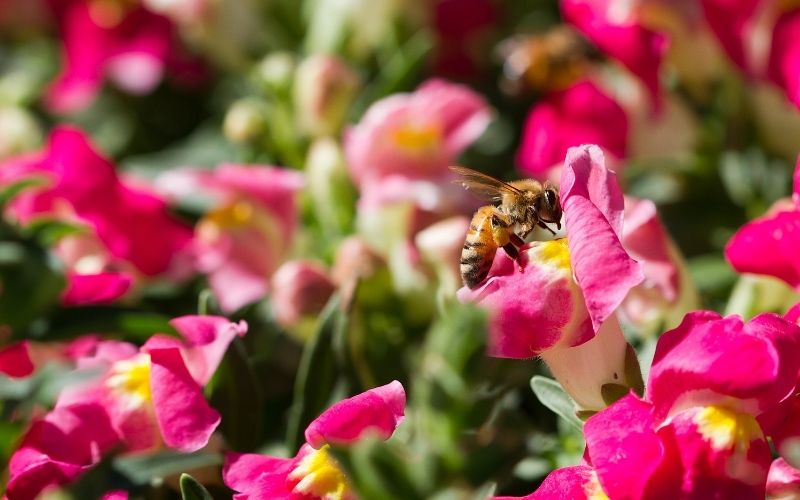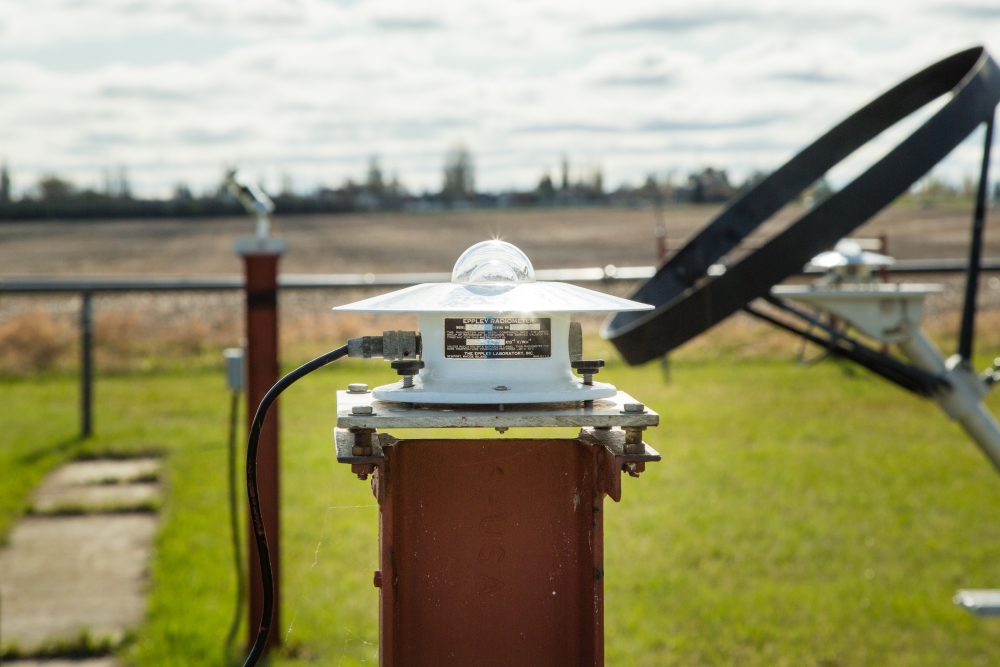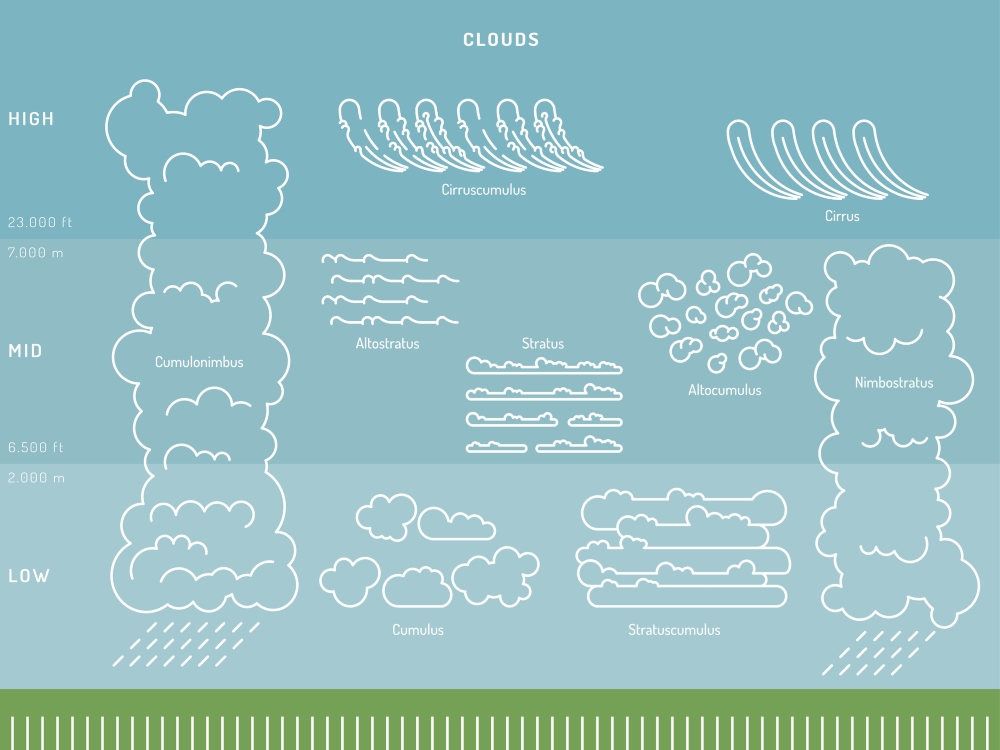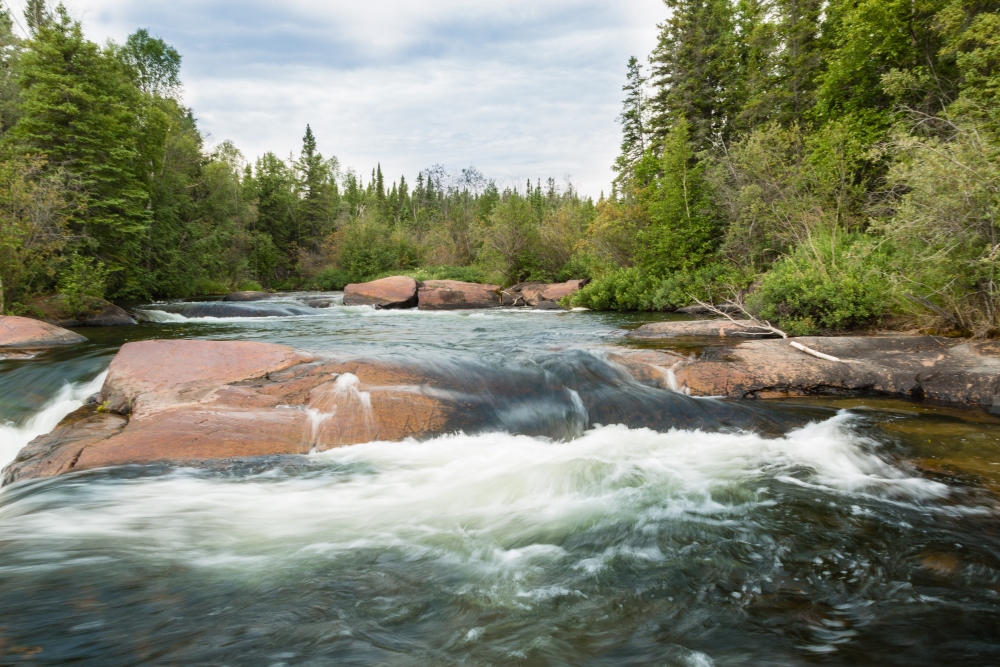We’re celebrating Saskatchewan's landscape with a list of great activities and interesting facts. The diverse landscapes across our province create unique ecosystems, filled with colourful flora and fauna—read on to learn how you can help and enjoy the natural wonder of the place we call home.

Planting for Pollinators and Biodiversity
As the snow melts (again), Saskatchewan is gearing up for another season of gardening. Bees and birds play an important role in pollination and healthy ecosystems. This year, consider how you can incorporate pollinator-friendly plants into your yard.
Bees rely on nectar and pollen for food and we rely on them to pollinate crops and gardens. Assist these fuzzy buzzers with plants such as coneflower, bergamot, verbena, snapdragon, aster, salvia, columbine and alyssum. They also love herbs like oregano, thyme, lavender, borage and rosemary, and flowering bushes and trees, such as honeysuckle, lilac, Saskatoon berry, apples and pears. Think about adding a ‘bee bath’—a shallow spot with clean water—for bees (and butterflies!) to safely get a drink. A shallow dish with a few rocks in the water works great.
Birds also play a role in pollination. Make your yard inviting to birds with trees and shrubs to nest. You can also add bird houses and feeders, and plant for bird food. Crabapple, honeysuckle, mountain ash, dogwood, haskap and Saskatoon berry trees and shrubs are a great source of food for our feathered friends. Hummingbirds, like butterflies, need nectar. Install a feeder, and plant flowers like hollyhock, nicotiana, petunia and gladiolas to attract ruby-throated hummingbirds to buzz by.
Did You Know?
Ecosystem experts at SRC are working to restore nature in northern Saskatchewan? SRC is managing Project CLEANS (Cleanup of Abandoned Northern Sites), a multi-year remediation project to assess and reclaim abandoned uranium mine and mill sites in Saskatchewan. The sites were abandoned in the 1960s with little or no remediation, and the habitat in the area was significantly altered.
SRC developed a sustainable remediation plan to implement proper environmental protection for the sites. This included surveying, monitoring and revegetation to promote biodiversity and create habitat for local wildlife. Read more on how biodiversity plays a role in remediation, and SRC’s work with Project CLEANS.
Finally, think about adding native plants into your garden. Creating biodiversity helps plants, animals, insects and microorganisms alike. They are excellent food and habitat sources. There are many Saskatchewan native plants to include. Saskatoon berry (and they’re delicious, too), crocus, sage, goldenrod and coneflower are just a few to consider. The Native Plant Society of Saskatchewan is an excellent resource to learn about native plants. You can also find excellent advice on gardening, biodiversity and more from the University of Saskatchewan’s College of Agriculture and Bioresources.
Best of all, you can find many of these plants and seeds at your local garden centre.

Weather Vs. Climate
Is there anything we talk about more than the weather in Saskatchewan? Probably not. Here’s a question: do you know the difference between weather and climate? According to SRC Climatologist Virginia Wittrock, climate is what we expect, and weather is what we get. “Weather is the short-term conditions of the atmosphere (rain, snow, wind, hot, cold, tornado, blizzard) and climate refers to atmospheric changes over longer periods of time, normally 30 years or more,” says Wittrock.
Did you know SRC monitors climate data at our Climate Reference Stations (CRS) in Saskatoon and Prince Albert? The Saskatoon station has been monitoring and reporting climate data for almost 60 years. The Saskatoon CRS monitors temperature, wind gusts, precipitation, soil temperature and so much more. This data is shared with many organizations and clients, including government, universities and the agriculture sector—and it is home to decades of data that is used to analyze trends over time. Learn more about SRC’s Climate Services.
Tracking climate is also important for climate change adaptation planning. SRC conducts research into planning for climate change in Canada’s boreal forests.
Guess that Cloud
Besides our constant weather chatter, we’re also sky watchers in Saskatchewan. How many times have you looked at the sky, in particular the clouds, to guess what weather might be headed your way?

This Earth Day, get to know your clouds with this handy guide.
- Stratus – stretched out or layered clouds, they are low, dull and grey and often a source of drizzle.
- Nimbostratus – low, dense and grey, these clouds bring rain or snow.
- Stratocumulus – round and well-defined, these are clouds we see in fall and winter.
- Cumulus – these puffy clouds are what we often to see on summer days in the afternoon and aren’t producers of precipitation. However, they can change into:
- Towering Cumulus – these clouds grow fast into towers or mounds with a cauliflower-like look and can produce rain or snow.
- Cumulonimbus – thunderstorm ahead! These clouds can produce hail and tornadoes and can get big. They are whiter and anvil-like on top, with a ragged, low bottom.
- Mammatus – these clouds attract attention when they are spotted in the sky. They are pouchy protrusions on the undersides of clouds—usually seen with cumulonimbus clouds.
Next time you’re gazing at our famous living skies, you’ll know what they’re telling you.
Enjoy Our Ecosystem
Saskatchewan is home to unique landscapes that include 100,000 lakes, sand hills, dark skies and native prairie. We’ve chosen three remarkable geographic wonders that show how special this place is.

- Northern Saskatchewan is a dream for anglers and explorers. Well worth a visit is the Churchill River System. Lac La Ronge Provincial Park is at the centre of it all. With more than 30 canoe routes and nearly 100 lakes, the park will take your breath away. Be sure to see nearby Nistowiak Falls, one of the highest waterfalls in the province accessible by boat and float plane.
- The Great Sand Hills are active desert-like sand dunes in southwest Saskatchewan, spread over 1,900 square kilometres. You’ll find native grasses, sagebrush, aspen and willow plus mule deer and antelope.
- Further south, find the Grasslands National Park near Val Marie. As the first national park that represents mixed grass prairie, it’s one of the few places left to find native prairie with blue gamma grass and prickly pear cactus, plus species at risk. Grasslands is home to bison, swift fox, burrowing owl and the last black-tailed prairie dog colonies in Canada. The park is also a sight for stargazing—it’s the darkest dark sky preserve in the country.
Did You Know?
SRC collaborates with many organizations across Canada working to preserve our ecosystems, such as Ducks Unlimited Canada (DUC). SRC embarked on a three-year project to develop a tool to measure carbon storage in boreal forest wetlands. SRC worked with DUC, the Sustainable Forestry Initiative (SFI), Louisiana-Pacific Canada (LP), Spruce Products Ltd (both SFI Program Participants) and Brandon University to better understand carbon storage in wetlands. Wetlands are an important carbon store that become more vital as we address climate change mitigation.
Learn more about how wetlands act as a carbon capture.
Wherever you choose to experience nature on Earth Day or any day of the year, be sure to leave nature how you found it. Make plans to ensure you leave no trace behind and take anything you brought with you back out. Preserving nature is something we are all responsible for and helps ensure it is around for future generations to enjoy.
This blog post was written by former SRC employee, Brook Thalgott
